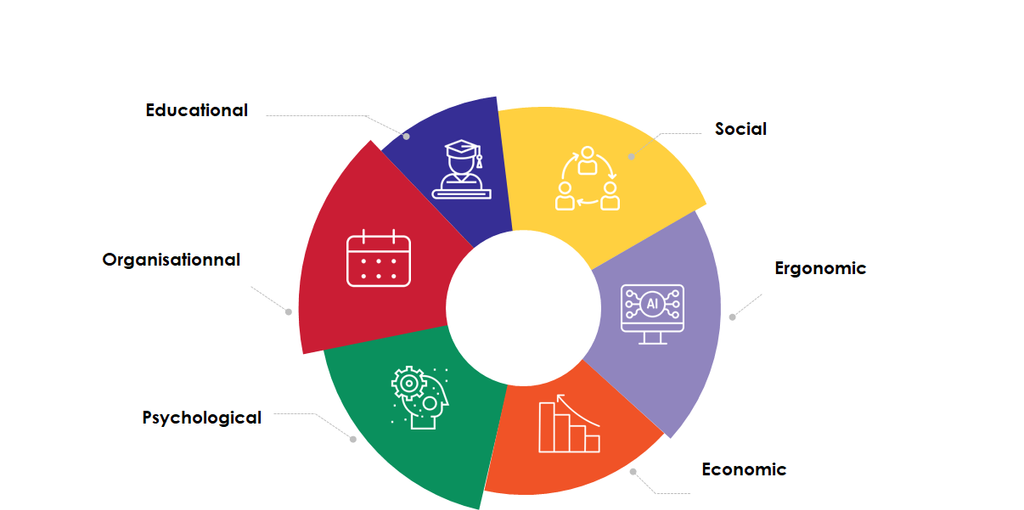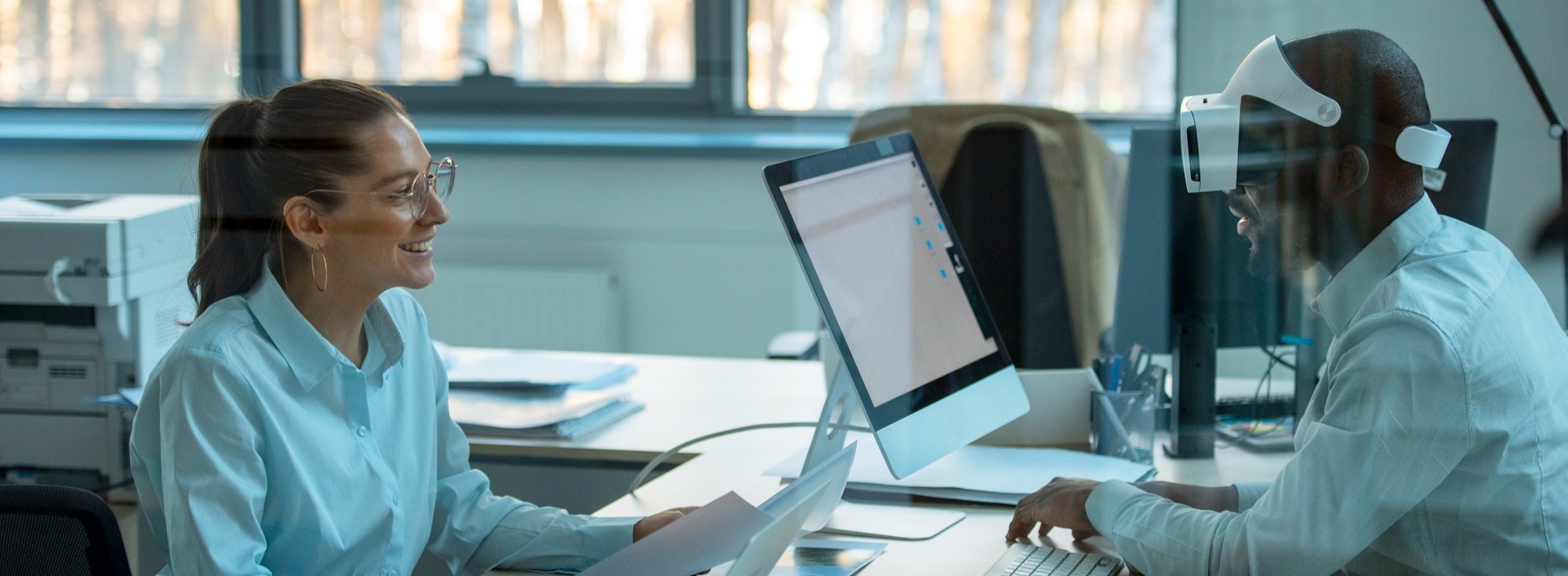Key words: Innovation – Living Lab – User-centered co-design – Real-life situation – Human and Social Science – Safety – Market launch
Innovation at the heart of Berger-Levrault’s strategy
A long tradition
Innovation is not simply the emergence of new ideas, but their effective implementation to meet the challenges of an ever-changing world. At Berger-Levrault, this commitment to innovation is a genuine tradition, rooted in the company’s DNA from the outset. From the printing press to artificial intelligence, Berger-Levrault has successfully integrated the technological advances of each era over the centuries. This ability to evolve is essential in the development of business software, a sector in which the needs of professionals and the expectations of users are constantly changing.
By adopting an approach centered on collaborative innovation, Berger-Levrault not only anticipates developments: it shapes the future by designing solutions adapted to the realities of the field.
To remain a leader in its businesses and markets, the company relies on research and innovative, high-performance, future-proof technologies. In order to offer products that take advantage of ever more innovative technologies, Berger-Levrault has set up a Living Lab at the heart of its business practices. This system relies on the active involvement of user communities throughout the Research and Development (R&D) cycle. Their involvement enriches the innovations that enhance existing business software or lead to the creation of new products.
Living Lab: a concept recognized throughout Europe
The Living Lab concept has its origins in the need to rethink traditional innovation models, opening them up to a more inclusive, participative dynamic rooted in reality. Unlike conventional laboratories, the Living Lab is established at the very heart of society, directly integrating users into the process of creation and experimentation. It thus becomes a hybrid space, at the crossroads of academic research, entrepreneurship and public policy, where innovation is shaped by contact with everyday uses and practices.
The European Network of Living Labs (ENoLL) [Ref 1] offers a structuring definition: “An open, user-centered innovation environment, based on the co-creation approach, simultaneously integrating research and innovation processes in real ecosystems.”
The Living Lab is thus based on a philosophy that revolves around fundamental principles:
- Co-creation, which places the user at the heart of the process, as a true architect of change
- A multi-disciplinary, collaborative approach, in which all stakeholders (companies, institutions, researchers, users) come together to form a web of intersecting intelligences.
- Experimentation in real-life conditions, far removed from conventional laboratory artifacts, during which innovative solutions come face to face with the complexity of the world.
- Continuous iteration, with each feedback feeding into the progressive improvement of the innovation.
The European Union recognizes the structuring role of Living Labs, making this approach part of a broader strategy of innovation and sustainable development. This reference framework is also supported by standards such as ISO 9241-210, which defines the fundamental principles of user-centered design, the methodological foundation of many Living Labs.
Around the world, these open labs are multiplying, in fields as varied as urban planning, health, the environment and education. The MIT City Science Lab, located at the heart of the Massachusetts Institute of Technology, explores changes in the smart city and urban mobility. In Spain, Fab Lab Barcelona is a crucible for experimentation in digital manufacturing and social innovation. In the Netherlands, the Care Innovation Living Lab is rethinking the use of new technologies in healthcare, questioning the relationship between medicine, technology and the patient experience.
In this proliferation of initiatives, the Living Lab appears not simply as a technical device, but as a paradigm shift. It reflects a desire to rethink the way we design, test and deploy innovation, by giving the user a central role in the development of tomorrow’s solutions.
Living Lab methodology: tangible benefits for innovation projects
The work of Schuurman et al, 2016 [Ref 2] explored the value of the Living Lab approach to open innovation in small and medium-sized enterprises (SMEs). Using case studies, they compare 27 SME projects conducted from 2011 to 2015 and highlight significant differences between projects that have integrated the Living Lab methodology and those that have not.
They show that applying the Living Lab method positively affects the innovation project by optimizing several key dimensions:
- Actionable user contributions: 85% of projects that applied the Living Lab methodology generated actionable user contributions, compared with just 64% of those that did not. This perfectly illustrates the ability of the Living Lab to encourage user involvement and produce more relevant, directly actionable feedback for the evolution of the innovation.
- Continuation of the development cycle: the Living Lab method also plays a decisive role in the continuation of the project development cycle. Indeed, almost 46% of projects incorporating this methodology continue their development, whereas this figure drops to 14% for projects not using this approach. This significant difference underlines the robustness of the Living Lab, which optimizes project viability through an iterative process of continuous improvement.
- Project abandonment rates: the Living Lab methodology helps to significantly reduce project abandonment rates. Only 23% of projects using this method were not launched, compared with 43% of projects without it. This marked differential demonstrates that the Living Lab approach secures the development process by limiting premature abandonment and reinforcing the ability of projects to overcome initial obstacles.
- Project maturity to market launch of innovation: 31% of projects developed using the Living Lab methodology led to market launch, compared to 43% of projects developed without this method. However, this result needs to be interpreted with caution: the lower figure is explained by the iterative and often longer-lasting nature of the Living Lab process, which focuses above all on the maturity and relevance of the innovation, rather than rapid commercialization.
Although the Living Lab methodology may lengthen the time needed for distribution, it offers real added value in terms of securing and robustness of the innovation development process. Its strength lies in collecting high-quality user feedback throughout the development cycle, enabling the innovation to be adjusted more precisely to market needs, thus reducing the risk of commercial failure.
Berger-Levrault Living Lab: user-centered innovation
User-centered co-design: emergence of collective, consensual content
Berger-Levrault’s Living Lab approach is based on an innovation process that actively involves user communities at every stage of development. It enables them to contribute directly to the creation, exploration, experimentation and evaluation of innovations.
Customers and users of Berger-Levrault products are consulted, share their expertise and thus participate in the co-construction of collective content based on consensus. Thanks to this dynamic, a virtuous cycle is established throughout the project. By continuously integrating users’ needs and expectations, the Living Lab helps to provide solutions that are better adapted to their uses, and ensures better adoption of innovations.
The emergence of collective content is underpinned by agile, user-centered methods, calling on multidisciplinary techniques that can draw on socio-anthropological and ergonomic concepts, as well as field surveys.
Evaluating innovation in real-life situations: a decisive step in the Living Lab approach
When an innovation is ready, it is tested in real-life conditions, directly integrated into users’ everyday environments and uses. This immersion confronts the functional prototype with real-life constraints, enabling us to assess its relevance and identify any necessary adjustments. Integrating the innovation into users’ work routines also provides an opportunity for in-depth analysis, highlighting potential obstacles, irritants and motivational levers to its adoption.
The evaluation is based on several analytical prisms, as the factors influencing adoption can be varied. It is therefore essential to cross-reference approaches in order to refine our understanding of the process. The analysis must cover the technical, ergonomic, social, economic, pedagogical, organizational and ethical dimensions, using multi-disciplinary indicators to obtain a comprehensive view of the innovation’s adoption potential.

Real-life evaluation takes place over a sufficiently long period to guarantee in-depth analysis of the innovation. It enables us to verify the match between the proposed functionalities and real user expectations, while validating its effectiveness and relevance. This evaluation phase also helps to identify the concrete benefits as well as any limitations of the innovation, by highlighting the most representative use cases and user experience. Over and above these aspects, it plays an essential role in detecting the brakes and irritants likely to hinder the adoption of the innovation. It encourages the emergence of new needs, including those that are latent or unconscious, and enables us to analyze its impact on professional practices and measure its added value.
In this process, users are no longer simply passive consumers, but become co-creators of value. By integrating their expertise and feedback, this evaluation phase enables the innovation to be fine-tuned before large-scale distribution, guaranteeing a better match with evolving user expectations. But it also makes it easier to estimate its value, while laying the foundations for efficient, sustainable scaling.
And then ?
In conclusion, the living lab experimentation method is proving to be a powerful tool for testing innovations in real-life conditions, providing essential feedback for improving products and services. This collaborative approach between researchers, companies and users fosters open innovation and co-creation. To take things a step further, a forthcoming article will be devoted to presenting concrete use cases and the results obtained from these experiments, offering a direct insight into their impact and effectiveness.
References
[Réf 1] https://enoll.org/living-labs/#living-labs
[Réf 2 ] The Impact of Living Lab Methodology on Open Innovation Contributions and Outcomes. Schuurman, De Marez et Ballon (2016). Technology Innovation Management Review. January 2016 (Volume 6, Issue 1).





